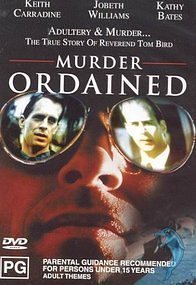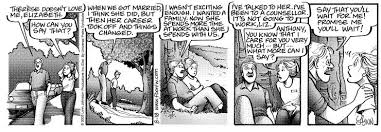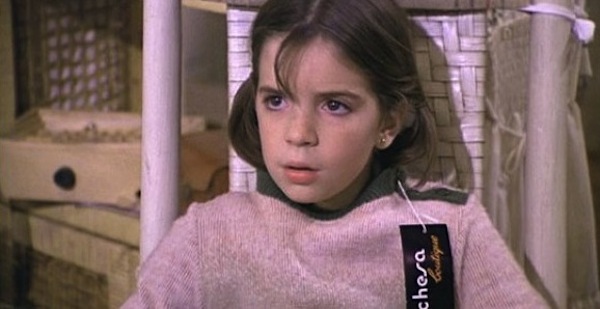I’ve been a voracious reader for almost 50 years, and in that time a handful of nonfiction articles have stuck with me for one reason or another. They aren’t necessarily the “best” articles I’ve ever read (although what does that even mean, anyway?), and for the most part they’re not the best-known. But they’re the pieces that worked their way into my subconscious, that I find myself thinking about while I’m drying the dishes or folding clothes or commuting. They’re the ones that, when I need inspiration, I return to, so I can be reminded how it’s done.
“Today is the Important Day—The Only Important Day.” Joseph N. Bell. Good Housekeeping, November (??) 1974.
A six-year-old girl, the oldest of four children, is stricken with a devastating, invariably fatal genetic disease. Statistically, no one else in her family should be afflicted. But the Universe cares nothing for your stupid statistics, puny humans.
My grandmother subscribed to Good Housekeeping through the ‘70s. I remember sitting next to her bookcase and poring over a lot of fawning pictorials about the Kennedys and the Kienast quintuplets, but I remember this article most vividly. I was initially drawn to the article because it was about children (like me!), but later I became absolutely obsessed with reviewing the medical aspects of the story and hoping that a cure would be found in time. (Spoiler: It wasn’t. There’s still no cure for metachromatic leukodystrophy, the disease that hit that family like a wrecking ball.)
I’ve always wondered what happened to the family. (I mean, I know what happened to some of them. But I desperately want good things for the others.)
“Rumors Around Town.” Calvin Trillin. The New Yorker, January 6, 1986. (Paywall alert!)
Forbidden passion, desperate housewives, mayhem, murder—this true story has it all. And while long-form journalism about tawdry affairs, particularly tawdry affairs leading to serious crime, is—let us say—not all that difficult to find, what sets “Rumors Around Town” apart is Trillin’s unique and unmistakable voice. He takes his time telling the story, letting it unspool like the two of you are sitting in a dimly-lit bar in Emporia, Kansas, and he’s a local and you’re a fascinated visitor, hanging on his every word.
Note: The murders of Sandra Bird and Marty Anderson took place maybe an hour from where I grew up, and the trial was big news when I was in high school. (There was even a made-for-tv movie, “Murder Ordained,” about it!)

Certain liberties may have been taken with the historical record.
“For Thou Art With Us.” Sarah D. Bunting. Tomato Nation, September 14, 2001.
The events of September 11, 2001, as related by someone who was in lower Manhattan that morning and witnessed the Towers’ collapse. Raw, immediate, and immensely powerful.
“Columbia’s Last Flight.” William Langewiesche. The Atlantic, November 2003.
On February 1, 2003, the space shuttle Columbia disintegrated upon re-entry to Earth’s atmosphere. The subsequent investigation laid bare a culture of mismanagement at NASA—too late, of course, for the seven astronauts who lost their lives in the disaster.
This article is a freakin’ masterclass in narrative structure. Look at what Langewiesche does. Look at how he starts at the end of the story, which is also the beginning, and ends by looping back to the start, which is also the end. (Read it – it’ll make more sense.) Look how he pings from point of view to point of view to point of view when describing the crash: A father and son videotaping re-entry; an exasperated mother; Mission Control, slowly realizing that things have gone very wrong. A masterpiece of long-form journalism.
“Why I Hate Anthony.” Shaenon K. Garrity. LiveJournal, December 18, 2006.
Do not pretend for one hot minute you don’t know what Garrity’s talking about.

For Better or For Worse, c. 2006. Waiting for the inevitable C&D letter in 5…4…3…
“The Leftovers.” Taffy Brodesser-Akner. Matter, September 29, 2014.
I’m not sure why this profile of celebrity chef Paula Deen struck such a chord, but the writing is exquisite—there’s not a word out of place. You’ll laugh, you’ll cry, you’ll roll your eyes, you’ll be enraged, you’ll want to sit down with Brodesser-Akner and ply her with dirty martinis and say “Okay. What are you not telling me about the Paula Deen cruise?” Because you know there’s got to be more that didn’t make it past Legal.
Just me? Oh. Well, okay then.
“A Woman Dies on Beech Street.” Charles P. Pierce. Esquire, December 23, 2014.
The chaotic days leading up to Terri Schiavo’s death, as experienced by her caretakers in hospice. Pierce’s admiration for the nurses, administrators, and security personnel at the hospice is almost outweighed by his righteous indignation at the circus that surrounded Schiavo’s highly politicized decline and death. Behold a top-notch journalist at the height of his powers.
“M is for the Million Things.” Quinn Cummings. Medium, June 24, 2018.
If I were teaching a class that read this essay, I would ask: Why did the author write it, and what audience did she picture? If nothing else, we would have a lively discussion. Since I’m not teaching, I will merely say that it’s about the legacy of emotional abuse, if you’re easily triggered you should probably avoid it, and if you’re not easily triggered you should definitely read it. And yes, readers of a certain age, the author is that Quinn Cummings.

Oscar nominee for The Goodbye Girl. She’s a writer now.
And finally, since most of these are pretty heavy and dark, I will leave you with a happy, hopeful, uplifting (and true!) story:
“The Best, Most Harrowing Valentine’s Day Miracle Story You Will Ever Read.” Dustin Rowles. Pajiba, February 14, 2017.
The drama is built right into this one: When Rowles’ wife was three months pregnant with their second child, they learned that she was actually carrying monoamniotic twins (identical twins who share an amniotic sac). For a whole litany of medical reasons, this is a Very, Very Bad Thing. Although an abortion was very much on the table, the couple ultimately decided to continue the pregnancy. Spoiler: Their family got Very, Very Lucky. A medical miracle; a love story. A true story. Smile through your tears.
Your turn! What articles and essays have grabbed hold of you and wouldn’t let you go? –Yeah, yeah: “Fear and Loathing in Las Vegas” really spoke to you, man. It fuckin’ CHANGED YOUR LIFE. It was just so real, man, y’know? – I know, my dude, I know. What else have you got? Tell me about it in the comments!